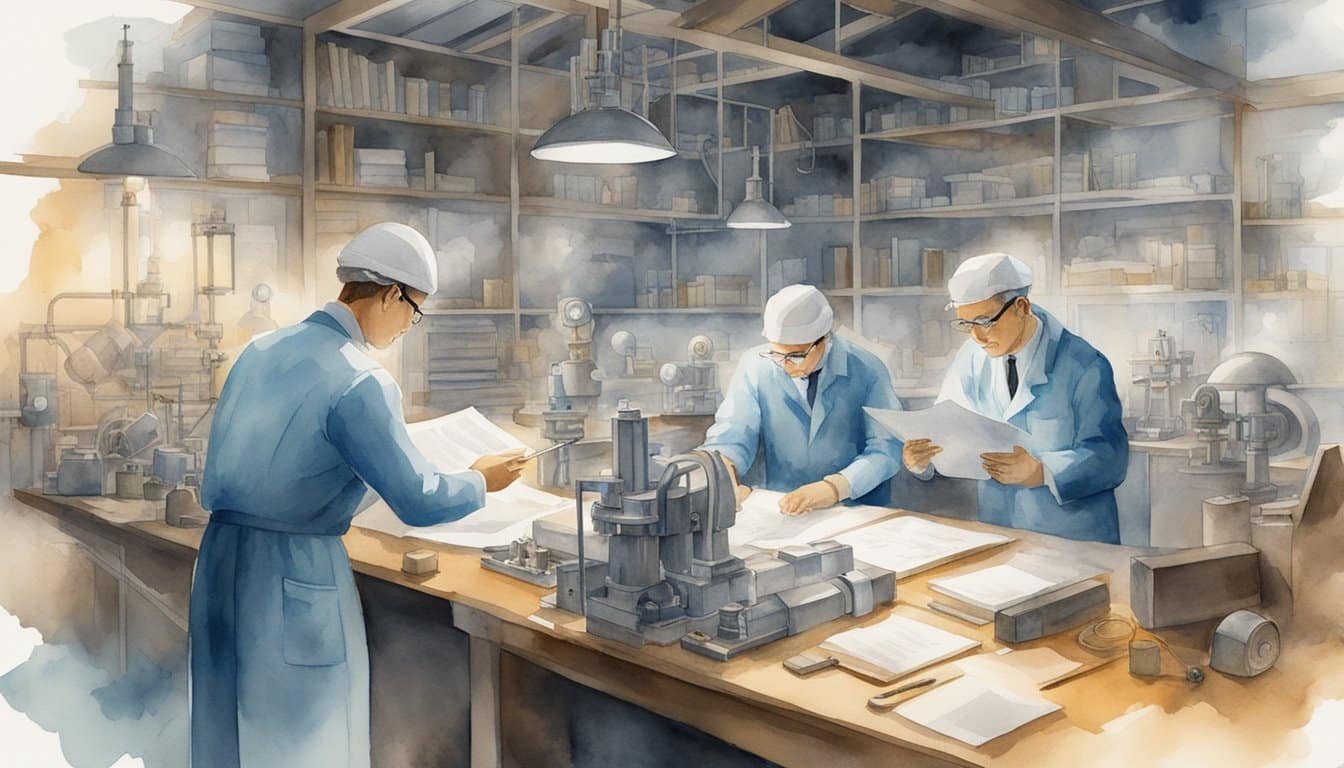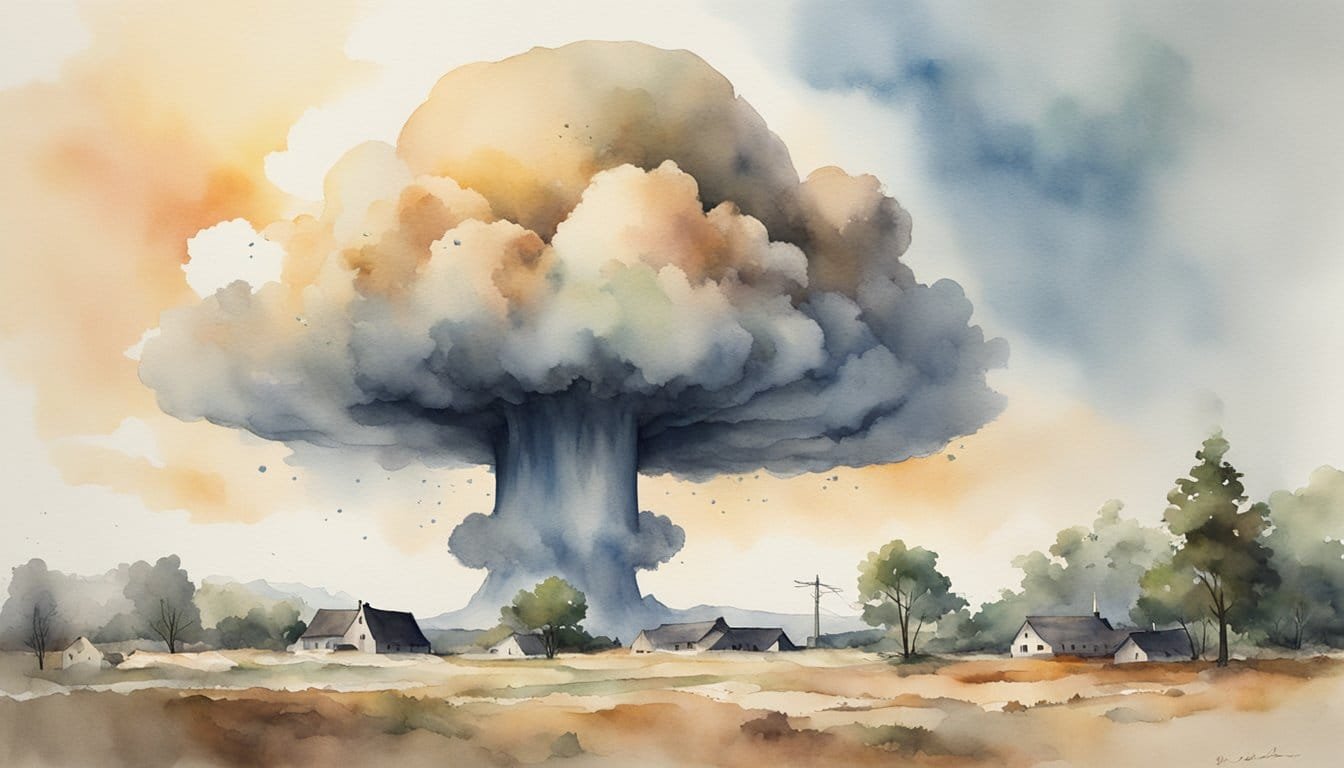Origins of the Manhattan Project

The Manhattan Project, a pivotal point in world history, signifies a massive, secretive undertaking by the United States to develop the first atomic bomb during World War II. Its beginnings hinged on fears of Nazi Germany’s potential to create a similar weapon and the pressing urgency to harness nuclear energy first.
Theoretical Foundations and Discovery
In the early 20th century, the scene was set with key scientific breakthroughs like the discovery of nuclear fission. Notably, scientists such as Leo Szilard grasped the power of a nuclear chain reaction, and with Albert Einstein, helped catalyze the project’s initiation. A landmark letter penned by Einstein in 1939 to President Franklin D. Roosevelt highlighted the potential of uranium to unleash considerable energy, prompting the U.S. government to take action.
Mobilization of Resources
President Roosevelt, convinced by Einstein’s compelling argument, established the Advisory Committee on Uranium. Soon after, the scope of investment widened significantly under the Office of Scientific Research and Development, guiding what would become the Manhattan Engineer District. The Army Corps of Engineers was tasked with the enormous logistical and construction challenges, emphasizing the gravity and scale of the initiative.
Securing Human Capital
The Manhattan Project’s success hinged on the brainpower of some of the time’s most brilliant physicists, including J. Robert Oppenheimer, who became the project’s scientific director. Major academic institutions like the University of Chicago, Columbia University, and the University of California played critical roles in nurturing the project. The recruitment effort also encompassed international talents such as Enrico Fermi, fortifying the project’s scientific backbone. Major General Leslie Groves of the Army Corps of Engineers led the administrative and military efforts, proving the project’s deeply intertwined civilian and military nature.
Development and Production

In an extraordinary race against time during World War II, the Manhattan Project achieved unparalleled feats in nuclear physics, chemistry, and engineering. This effort resulted in the creation of the first atomic weapons, which marked a turning point in warfare and global politics.
Creation of Atomic Weapons
The initiative to develop atomic weapons, known as the “Manhattan Project,” was a secret endeavor that brought together some of the greatest minds in physics, including Robert Oppenheimer, who led the team at the Los Alamos Laboratory in New Mexico. The goal was to produce two different types of atomic bombs: one that used uranium-235 and another that utilized plutonium-239. The uranium bomb worked on a gun-type design, where conventional explosives were used to shoot one piece of uranium into another to achieve critical mass. Conversely, the plutonium bomb employed an implosion design, which used explosives to compress plutonium into a supercritical state.
- Gun-Type Bomb: Uranium-235
- Implosion-Type Bomb: Plutonium-239
The development of these devices involved understanding and harnessing nuclear fission to unleash the massive energy stored within the atomic nucleus. A successful demonstration occurred on July 16, 1945, with the Trinity Test in New Mexico, where the first plutonium-based bomb, codenamed “Gadget,” was detonated.
Centers of Research and Production
As the project expanded, several key sites across the United States became focal points of activity. The Los Alamos Laboratory in New Mexico, initially known as Project Y, was the central hub for weapons design and scientific research. It was here where the top physicists and chemists worked on the core designs of the atomic bombs.
For the production of uranium-235, a special enrichment process was needed. This was primarily carried out at Oak Ridge, Tennessee, using techniques such as gaseous diffusion and electromagnetic separation. The processed uranium was then shipped to Los Alamos to be used in the gun-type device.
The creation of plutonium-239 took place in nuclear reactors, which were constructed at Hanford, Washington. Under the guidance of chemist Glenn Seaborg, the Metallurgical Laboratory at the University of Chicago had developed the process to create plutonium from uranium in nuclear reactors. The Hanford Site provided the plutonium needed for the bomb tested at Trinity and the one detonated over Nagasaki.
Here’s a snapshot of these essential locations and processes:
- Los Alamos, New Mexico: Design and assembly of atomic weapons.
- Oak Ridge, Tennessee: Uranium enrichment through gaseous diffusion and electromagnetic separation.
- Hanford, Washington: Production of plutonium-239 in nuclear reactors.
Impact and Aftermath

The Manhattan Project stands as a pivotal episode in human history, marked by the swift conclusion of World War II and the dawn of the nuclear age, with profound geopolitical shifts that followed.
End of World War II
The deployment of two atomic bombs, named Little Boy and Fat Man, on the cities of Hiroshima and Nagasaki proved to be a lethal display that led to Japan’s unconditional surrender. The Pacific theater of World War II came to a dramatic close shortly thereafter, as these events prompted President Harry Truman to announce the end to hostilities.
Seeds of the Cold War
In the aftermath, a significant shift in global power dynamics was observed. The immense power of the atomic bombs showcased by the United States instilled a sense of urgency within the Soviet Union to develop their own nuclear weapons, signaling the beginning of the nuclear arms race. The blooming tension between these superpowers swiftly escalated into the Cold War, a period of geopolitical tension where the specter of nuclear war loomed large, influencing both national defense strategies and international diplomacy.
Evolution into the Nuclear Age
Postwar, the Atomic Energy Commission was established to further explore civilian applications of atomic science. This led to advances in medicine, such as cancer treatment with radiation, and in industry, where nuclear reactors began to produce electricity. Yet, the decades following also saw controversial events, like Operation Crossroads at Bikini Atoll, which underscored the staggering environmental impact of nuclear explosions. Reflecting on the Trinity test that previewed these formidable outcomes, the era was marked by a complex legacy of both terror and technological triumph.

